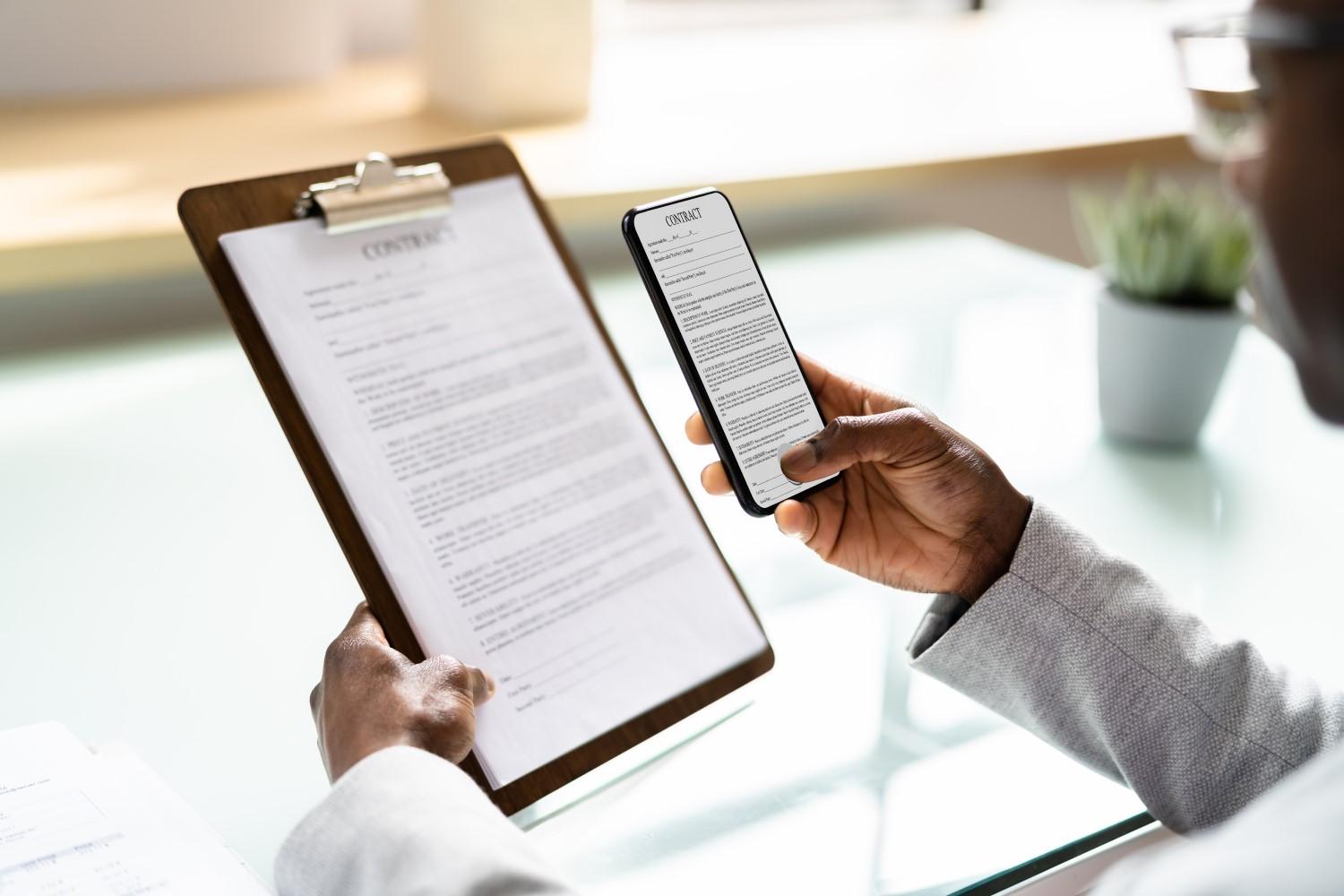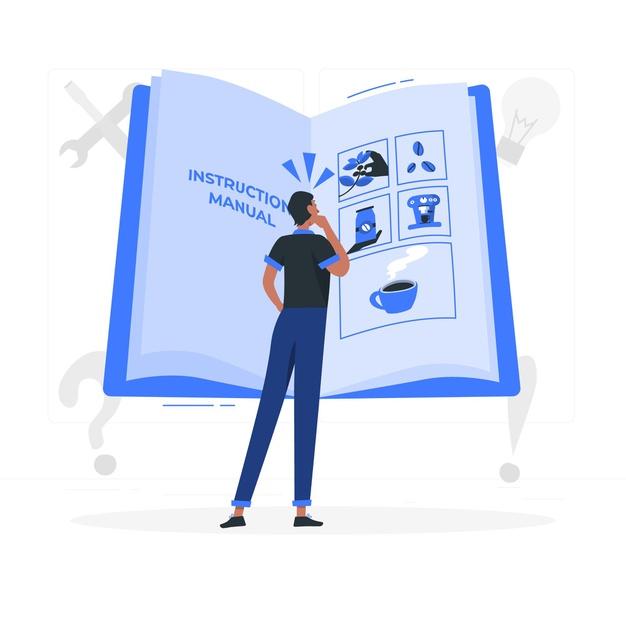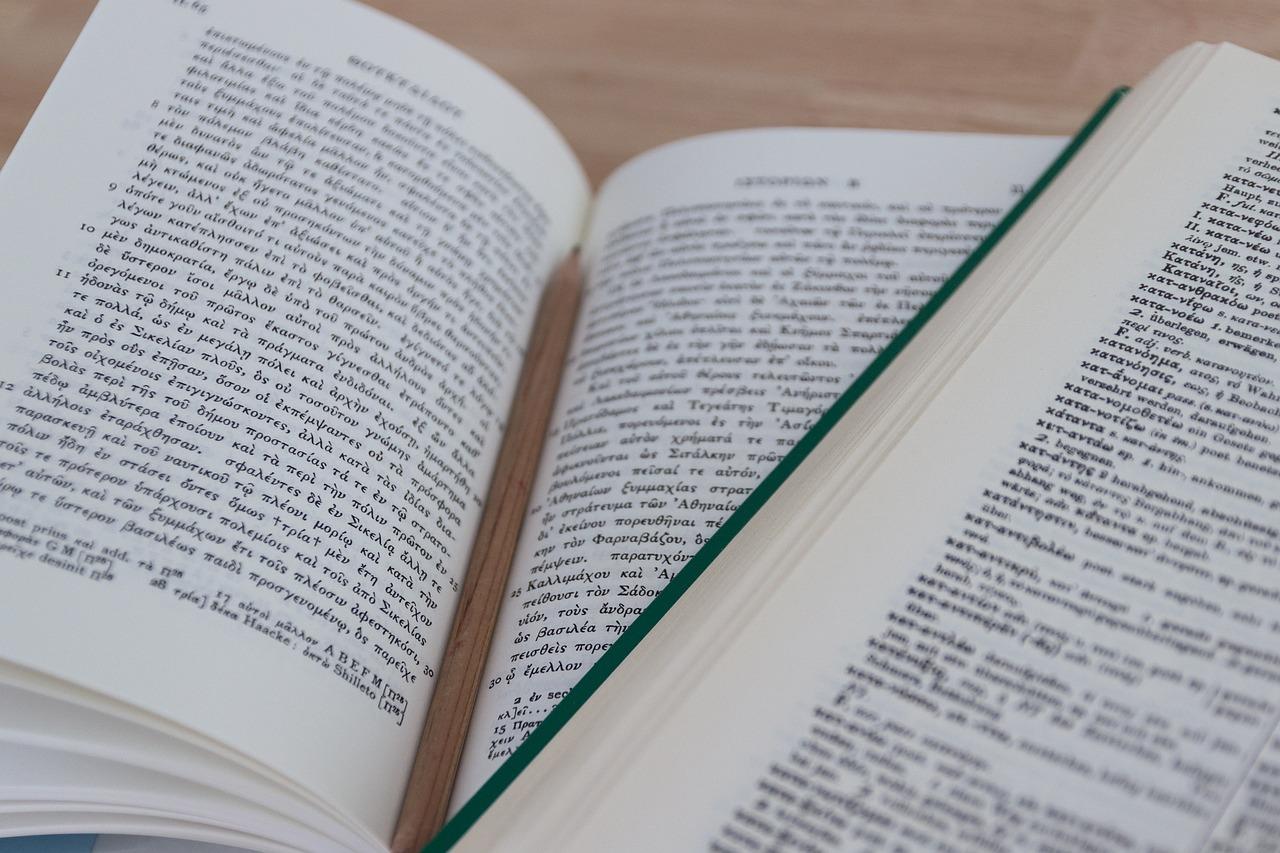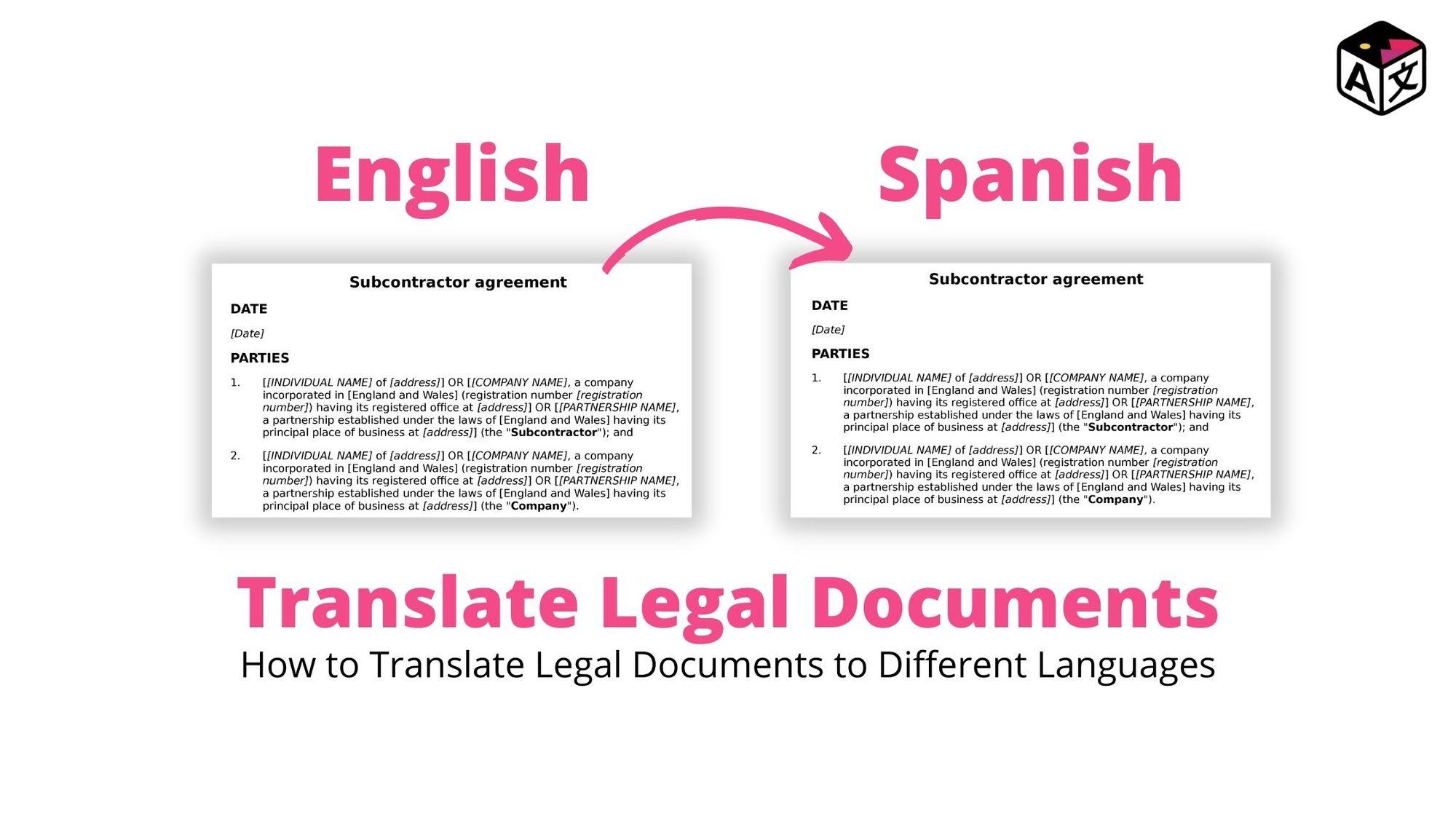In our ever-globalized world, the ability to communicate across languages has never been more crucial. Whether you’re a business wanting to expand your reach, a traveler seeking to connect with locals, or someone eager to explore foreign literature, the need for translation is omnipresent. But with so many different types of documents that require translation—from legal contracts and technical manuals to marketing materials and personal letters—navigating this landscape can be daunting. So, how do you know which documents are most commonly translated, and why does it matter? In this article, we’ll take a closer look at the popular types of documents that often require translation, shedding light on their unique challenges and the critical role they play in effective communication. Get ready to discover how understanding these document types can not only streamline your translation process but also enhance your cross-cultural interactions!
Understanding the Importance of Document Translation in a Globalized World
In today’s interconnected world, translation has become more crucial than ever, especially for various types of documents that serve distinct purposes across different industries and sectors. Understanding the nuances of these documents helps ensure that translations maintain their integrity and effectiveness. Here’s a breakdown of some of the most common types of documents that require translation:
- Legal Documents: This category includes contracts, agreements, and court documents. The precise wording in legal texts is vital, as even a slight mistranslation can lead to significant consequences.
- Medical Records: Patient histories, clinical studies, and consent forms often need translation to ensure clear communication in healthcare settings. Accuracy is paramount, as it can directly affect patient care.
- Technical Manuals: From user guides to product specifications, technical documents require specialized knowledge. A well-translated manual can enhance user experience and ensure safety.
- Marketing Materials: Brochures, advertisements, and websites often undergo translation to reach global audiences. Cultural relevance and persuasive language are key in these documents to engage potential customers.
- Academic Papers: Research studies and academic articles need translation to disseminate knowledge across linguistic barriers. Maintaining the original context and intent is crucial for scholarly communication.
As diverse as these documents are, they all share a common goal: to convey information accurately and effectively across different languages. The importance of professional translation services cannot be overstated, as they not only bridge language gaps but also respect cultural nuances that can influence the interpretation of the text. Below is a simple table summarizing the key features of each document type:
| Document Type | Key Features | Importance of Translation |
|---|---|---|
| Legal Documents | Precise wording, legally binding | Avoid legal disputes |
| Medical Records | Patient safety, confidentiality | Ensure proper care |
| Technical Manuals | Specialized terminology | Enhance usability |
| Marketing Materials | Cultural relevance | Engage target audience |
| Academic Papers | Research integrity | Global knowledge sharing |
Each document type serves a unique purpose, and proper translation ensures that the intended message is preserved, regardless of the language. As businesses and individuals continue to navigate a global landscape, understanding the significance of these translated documents can lead to more effective communication and successful collaborations across borders.
Key Categories of Documents that Require Translation
When it comes to translation, there are certain document categories that frequently require professional linguistic expertise. Each category serves unique purposes and demands precision in language to ensure the intended message is accurately conveyed. Understanding these key types can help you determine which documents might need translation for your personal or business needs.
Legal Documents: Legal documents are among the most critical items requiring translation. They often hold significant weight in court and legal proceedings, making accuracy paramount. Common legal documents include:
- Contracts
- Wills and Testaments
- Litigation Papers
- Patents
Each of these documents must maintain their original meaning and implications, which is why professional translation is essential.
Medical Documents: In the healthcare sector, translation is vital for ensuring that patients receive the proper treatment and understanding of their health conditions. Key medical documents include:
- Patient Records
- Clinical Trials
- Medical Research Papers
- Informed Consent Forms
Accurate translations can significantly impact patient outcomes and safety, illustrating the importance of specialized translators in this field.
Business and Marketing Materials: For companies looking to expand their reach, translating marketing materials is crucial for connecting with a global audience. Consider these common types:
- Brochures
- Websites
- Product Descriptions
- Press Releases
Effective translation in business helps to maintain brand voice and messaging while adapting to cultural nuances.
Technical Documents: Industries such as engineering and IT often require precise translations to ensure the efficacy and safety of products. Essential technical documents include:
- User Manuals
- Product Specifications
- Software Documentation
- Technical Reports
Accuracy in technical translations is vital, as even minor errors can lead to costly misunderstandings.
understanding the different categories of documents that require translation helps you navigate the complexities of multilingual communication. Whether it’s for legal, medical, business, or technical purposes, ensuring professional and accurate translations can make all the difference in conveying your message effectively.
Navigating Legal Documents: What You Need to Know
When it comes to legal documents, translation is not just about converting words from one language to another; it’s about ensuring that the meaning, context, and nuances are preserved. Different types of legal documents require distinct approaches to translation, and understanding these can make a significant difference in the outcome of legal proceedings or transactions.
Here are some of the most common types of legal documents that often require translation:
- Contracts: These are binding agreements between parties. Accurate translation is crucial, as even a minor error can lead to disputes.
- Patent Applications: Precision is key in patent documents to avoid potential legal challenges and ensure protection of intellectual property.
- Court Documents: Translations of court orders, judgments, and filings must be exact to maintain legal integrity.
- Legal Correspondence: This includes letters, memos, and communications that may need to be translated for clarity and understanding between parties.
- Wills and Testaments: The sensitive nature of these documents requires careful handling to ensure the testator’s wishes are respected and accurately conveyed.
Each document type has its own set of challenges. For instance, legal terminology can vary significantly between different legal systems. Thus, a translator must not only be fluent in the source and target languages but also have a deep understanding of the legal concepts involved. This ensures that the translation reflects the correct legal implications and responsibilities.
To illustrate the complexity, consider the following table which outlines key features of these document types:
| Document Type | Key Considerations | Common Uses |
|---|---|---|
| Contracts | Precision in terms, clauses, and obligations | Business agreements, service contracts |
| Patent Applications | Technical language and compliance with regulations | Intellectual property protection |
| Court Documents | Exactness in legal language and formatting | Legal proceedings, appeals |
| Legal Correspondence | Clarity and formality | Negotiations, communications between legal entities |
| Wills and Testaments | Respect for the deceased’s wishes | Estate planning, inheritance matters |
when navigating the world of legal document translation, it is essential to recognize the unique characteristics of each document type. Engaging with translators who specialize in legal language can lead to better outcomes, ensuring that every detail is accurately conveyed and understood across languages and legal systems.

The Art of Translating Marketing Materials for Maximum Impact
In the realm of marketing, the effectiveness of your message can hinge on the quality of your translation. Whether you’re expanding into new markets or connecting with diverse audiences, understanding the types of documents that often require translation is crucial. Here’s a look at some popular categories you might encounter.
1. Promotional Materials: These documents are designed to catch the eye and engage potential customers. They include:
- Brochures
- Flyers
- Posters
- Product Catalogs
When translating promotional materials, it’s essential to not only convey the message but also to adapt the tone and design to resonate with the target audience. Cultural nuances play a significant role here, making it imperative to work with translators who understand the local context.
2. Website Content: Your website is often the first point of contact for prospective clients. Translating website content includes:
- Landing Pages
- Blogs and Articles
- FAQs
- Terms and Conditions
With website translation, maintaining SEO integrity is vital. Translated keywords should be equally effective in driving traffic, ensuring that you reach the right audience in their native language.
3. Technical Documents: These can be more complex, requiring specialized knowledge. Common types include:
- User Manuals
- Product Specifications
- Training Guides
Accuracy is key in technical translations, as even a minor error could lead to misunderstandings. Therefore, working with translators who have expertise in the relevant field is a must to guarantee clarity and correctness.
4. Social Media Content: In today’s digital age, your brand’s voice on social platforms can greatly influence engagement. This includes:
- Posts
- Advertisements
- Comments and Responses
When translating social media content, it’s important to capture the essence of the conversation. This means choosing words and phrases that not only make sense linguistically but also fit the cultural vibe of the target audience.
By recognizing these various document types and their unique translation needs, you can ensure that your marketing materials are not only translated effectively but also tailored for maximum impact. The right translations can elevate your brand’s presence in global markets, making your message not just heard, but felt.

Translating Technical Manuals: Precision is Key
When it comes to translating technical manuals, precision is not just important; it’s absolutely crucial. These documents often serve as the backbone of complex machinery and intricate systems, providing users with essential instructions and safety information. A minor error in translation can lead to misunderstandings, operational failures, or even hazardous situations. Therefore, a meticulous approach to language conversion is a necessity.
Technical manuals generally encompass a wide variety of documents, each requiring a unique translation strategy. Some of the most popular types include:
- User Guides: Designed to assist end-users in navigating products or software.
- Provide step-by-step instructions for assembling or setting up equipment.
- Product Specifications: Outline technical details that inform users about product capabilities and features.
- Safety Data Sheets (SDS): Essential for conveying safety information related to chemicals and hazardous materials.
- Training Manuals: Educational resources aimed at training employees or users on specific tasks or processes.
Each type of document has its own terminologies and conventions that must be honored during translation. For instance, a user guide may adopt a conversational tone to engage the reader, while a safety data sheet demands a more formal and direct approach to communicate critical information effectively. Understanding these nuances can make a significant difference in the impact and usability of the translated content.
To illustrate this point, consider the following table comparing key attributes of different types of technical documents:
| Document Type | Target Audience | Translation Focus |
|---|---|---|
| User Guides | End-Users | Clarity and usability |
| Installation Manuals | Technicians | Accuracy and detail |
| Product Specifications | Engineers/Developers | Technical precision |
| Safety Data Sheets | All Users | Safety and compliance |
| Training Manuals | Employees/Users | Engagement and comprehension |
ensuring that translations of technical manuals are accurate and contextually appropriate is paramount. By understanding the specific needs tied to each type of document, translators can maintain the integrity of the content while making it accessible to a global audience. Ultimately, investing in high-quality translations not only supports user experience but also enhances safety and compliance across various industries.
Breaking Down Financial Documents: Ensuring Accuracy and Clarity
When dealing with financial translations, accuracy is paramount. The documents involved often carry significant implications, requiring not just a direct translation, but an understanding of regional financial practices and terminologies. Here are some popular types of financial documents that often require translation:
- Financial Statements: These include income statements, balance sheets, and cash flow statements. Precision in translating these documents is essential, as they provide a snapshot of a company’s financial health.
- Tax Documents: These may range from personal tax returns to corporate tax filings. Given the legal implications, ensuring clarity and adherence to local laws can make a substantial difference.
- Loan Agreements: Often filled with complex terms and conditions, translating these documents requires not only linguistic skills but also an understanding of financial regulations in different jurisdictions.
- Investment Reports: These documents summarize the performance of investments and require a nuanced translation to accurately convey financial analysis and forecasts.
- Compliance Documents: These ensure companies meet legal standards, and translating them accurately helps avoid legal complications and penalties.
To ensure clarity and comprehension, it is crucial to engage with professionals who specialize in financial translation. This not only helps maintain the integrity of the content but also enhances the credibility of the documents in the eyes of stakeholders. Effective communication in financial reporting can significantly impact business relationships and negotiations.
Below is a simplified table illustrating the key attributes of the different types of financial documents:
| Document Type | Purpose | Key Aspect |
|---|---|---|
| Financial Statements | Snapshot of financial health | Precision in figures |
| Tax Documents | Compliance with tax laws | Legal accuracy |
| Loan Agreements | Terms of borrowing | Understanding legal jargon |
| Investment Reports | Performance evaluation | Analytical clarity |
| Compliance Documents | Meet regulatory standards | Adherence to legal language |
Understanding the nuances of these documents is not just about translation; it’s about crafting a narrative that resonates across different languages and cultures. The right translation can bridge gaps, foster understanding, and ultimately lead to better financial outcomes.

Medical Translations: The Critical Role of Context and Terminology
In the realm of medical translations, understanding the specific types of documents that require precise language and contextual clarity is essential. Various documents serve unique purposes, and each demands a tailored approach to ensure accurate representation of medical information across languages. Below are some of the most common types of medical documents that professionals often seek to have translated:
- Clinical Trial Documents: These include protocols, informed consent forms, and case report forms. The nuances in these documents are critical, as they directly affect participant safety and regulatory compliance.
- Patient Records: Medical histories, lab results, and diagnostic reports must be translated with utmost precision to ensure continuity of care and patient understanding.
- Medical Device Manuals: Instructions for use, safety information, and regulatory submissions all require careful translation to comply with local laws and ensure user safety.
- Pharmaceutical Literature: This category encompasses product inserts, patient leaflets, and marketing materials that require a deep understanding of both medical terminology and target audience.
- Research Papers: Academic articles often present complex data and findings that must be conveyed accurately to maintain the integrity of the research.
The role of context in these documents cannot be overstated. For instance, the same term may have different interpretations based on regional dialects or specific medical specialties. A term commonly used in cardiology may not resonate the same way in oncology. Understanding these nuances is vital for translators, who must ensure that the translated material not only conveys the original message but also resonates with the target audience.
Terminology management plays a pivotal role in achieving accurate translations. This involves maintaining a consistent database of medical terms, which ensures that the same terms are used uniformly across various documents. By utilizing glossaries and terminological databases, translators can avoid discrepancies and ambiguities that might otherwise lead to misunderstandings in patient care or clinical research.
Given the high stakes involved in medical translations, it’s essential to employ professional translators who possess both linguistic expertise and medical knowledge. This dual competency allows them to navigate the complexities of medical jargon and cultural considerations effectively. In turn, this ensures that the translated documents fulfill their intended purpose—whether it’s aiding in diagnosis, guiding treatment, or facilitating compliance with regulatory requirements.

Localizing Website Content: Engaging Global Audiences Effectively
When it comes to engaging with global audiences, the types of documents you choose to translate play a critical role in ensuring your message resonates across different cultures. Understanding the popular types of documents for translation can help you create a tailored approach that enhances user experience and engagement.
Marketing Materials: These documents are crucial for attracting and retaining customers in diverse markets. Effective translation of marketing materials—including brochures, advertisements, and email campaigns—ensures that your brand voice is not lost in translation. Key aspects to consider include:
- Cultural Nuances: Tailoring your message to fit local customs and traditions can significantly increase your engagement.
- SEO Optimization: Employing local keywords in translated content can boost your visibility on search engines.
Legal Documents: For businesses operating internationally, legal documents are vital for compliance and effective communication. These can include contracts, terms of service, and privacy policies. Precision is key here, as even minor errors can lead to serious consequences. Important factors include:
- Accuracy: Ensuring that the legal jargon is correctly interpreted is essential.
- Localization: Adjusting legal terms to fit local laws and practices enhances clarity and trust.
Technical Manuals: If your business involves products or services that require detailed instructions, translating technical manuals is a necessity. These documents need to be both accurate and easily understandable. Considerations include:
- Clarity: Using simple language can help users of varying skill levels understand the material.
- Visual Aids: Incorporating images and diagrams can help bridge language gaps.
here’s a simple table showcasing the types of documents and their primary focus for translation:
| Document Type | Primary Focus |
|---|---|
| Marketing Materials | Brand Promotion |
| Legal Documents | Compliance & Clarity |
| Technical Manuals | Usability & Instruction |
By focusing on these essential document types, your localization strategy will not only enhance communication but also foster deeper connections with your audience around the world. Remember, effective translation is more than just converting words; it’s about conveying meaning and context in a way that resonates with each unique demographic.

Tips for Choosing the Right Translation Service for Your Document Needs
When you’re in the market for translation services, the type of document you need to translate plays a crucial role in your decision-making process. Different types of documents require different levels of expertise and understanding of specific terminologies. Here are some essential tips to ensure you choose the right translation service based on your document needs.
First and foremost, consider the specific requirements of your document. For instance, legal and medical documents often contain jargon that needs to be accurately conveyed. Here are a few types of documents to think about:
- Legal Documents: Contracts, agreements, and court documents.
- Medical Documents: Patient records, clinical trials, and medical research papers.
- Technical Manuals: User guides, product specifications, and engineering documents.
- Marketing Materials: Brochures, websites, and advertisements.
Next, assess the expertise of the translation service. Not every translator is qualified to handle every type of document. For specialized fields, it’s essential to find a service with translators who have a background in that specific area. For example, if you’re translating a legal contract, make sure the translator is familiar with legal terminology and practices in both the source and target languages.
Another critical factor is the quality assurance processes the translation service employs. Quality checks are vital, especially for documents that require high accuracy. Inquire if the service offers proofreading and editing by a second translator. This extra step can significantly reduce errors and enhance the final output’s quality.
Lastly, consider the turnaround time and customer support. Make sure the translation service can meet your deadlines without compromising quality. A reliable service will also provide excellent customer support to address any concerns or clarifications during the translation process.
| Document Type | Key Requirements | Recommended Translation Service |
|---|---|---|
| Legal Documents | Expertise in legal terminology | Specialized legal translation services |
| Medical Documents | Knowledge of medical jargon | Healthcare-focused translators |
| Technical Manuals | Understanding of technical concepts | Technical translation agencies |
| Marketing Materials | Cultural sensitivity and creativity | Marketing translation experts |
By keeping these considerations in mind, you can navigate the complexities of selecting a translation service that perfectly aligns with your document needs. Making an informed decision will not only enhance the quality of your translated documents but can also lead to better communication and understanding across languages.

Future Trends in Document Translation: What to Watch For
As the world becomes increasingly interconnected, the demand for document translation is evolving rapidly. Businesses and individuals alike are seeking efficient and reliable translation services to communicate effectively across borders. Understanding the types of documents that require translation is crucial for anyone looking to navigate this complex landscape.
Legal Documents are among the most commonly translated materials, as accuracy is paramount. This category includes contracts, agreements, and court documents. The challenge lies in maintaining the precise legal terminology while ensuring cultural relevance. With the rise of international business, the need for skilled translators who specialize in legal language has surged.
Marketing Materials encompass a range of documents from brochures and advertisements to websites and social media content. These materials require not only translation but also localization, adapting the message to resonate with the target audience. Companies are increasingly turning to translators who understand local customs, humor, and preferences, as this can significantly impact consumer engagement.
Technical Manuals, which include user guides and product specifications, demand a different approach. Translators must possess a deep understanding of the subject matter, ensuring that technical terms are correctly translated. The trend towards remote work and global product launches means that the need for precise technical translations will only grow, making this a vital area for translators to focus on.
| Document Type | Key Considerations | Future Trends |
|---|---|---|
| Legal Documents | Accuracy, cultural nuances | Increased demand for specialists |
| Marketing Materials | Localization, audience engagement | Emphasis on cultural adaptation |
| Technical Manuals | Subject matter expertise | Growth in remote product launches |
The demand for Medical Documents is also on the rise. These include patient records, research papers, and consent forms. Translators must not only be proficient in medical terminology but also understand the implications of inaccuracies. As healthcare becomes more globalized, the need for reliable medical translations will become critical.
the landscape of document translation is shifting, with new trends emerging as globalization continues. By keeping an eye on these popular document types and their specific challenges, businesses can better prepare for the future of translation services and ensure they meet the needs of a diverse clientele.
Frequently Asked Questions (FAQ)
Q&A: Overview of Popular Types of Documents for Translation
Q1: Why is translation important for businesses and individuals today?
A1: Translation is crucial in our increasingly globalized world. Whether you’re a business looking to reach international markets or an individual wanting to connect with loved ones across borders, effective communication is key. Proper translation ensures that your message is not just heard but also understood in the right cultural context. This can lead to more successful negotiations, better customer relationships, and a broader audience for your content.
Q2: What are some of the most common types of documents that need translation?
A2: There are several types of documents that frequently require translation. Here are some of the most popular ones:
- Legal Documents: Contracts, agreements, patents, and court documents need precise translation to ensure compliance and understanding across legal systems.
- Technical Manuals: For industries such as engineering, manufacturing, and IT, accurate translation of technical manuals and user guides is essential to avoid errors and ensure proper usage.
- Marketing Materials: Brochures, websites, and advertisements benefit from translation that not only conveys the message but also resonates with the target audience’s cultural nuances.
- Medical Documents: Patient records, consent forms, and clinical studies must be translated accurately to ensure patient safety and regulatory compliance.
- Literary Works: Books, poems, and articles often require translation to reach wider audiences and share stories across cultures.
Q3: How does the translation process differ for these document types?
A3: Great question! Each document type typically has its own translation requirements. For example, legal translations demand a high degree of accuracy and adherence to specific terminology to prevent misinterpretations. In contrast, marketing translations often involve not just language conversion but also transcreation, where the message is adapted to evoke the same emotional response in a different culture. Technical documents require expertise in the subject matter to ensure that the translation is accurate and comprehensible, while medical translations need to be particularly meticulous to avoid any potential harm to patients.
Q4: What challenges do translators face with these documents?
A4: Translators encounter various challenges depending on the type of document. For legal texts, the challenge often lies in understanding complex legal terminologies and ensuring that the translation holds up in a court of law. Technical translations can be difficult due to specialized jargon and the need for precision. Marketing materials require creativity to maintain the original message’s impact while adapting to cultural differences. Ultimately, each type of document demands a different skill set and expertise from the translator.
Q5: How can businesses and individuals ensure they choose the right translation service?
A5: Choosing the right translation service is essential for achieving high-quality results. Start by looking for professionals with expertise in the specific document type you need translated. Check their credentials, experience, and client reviews. It’s also beneficial to work with translators who are native speakers of the target language, as they’ll have a better grasp of cultural nuances. Lastly, don’t hesitate to ask for samples of their work or request a trial translation to gauge the quality and style before committing.
Q6: What’s the takeaway for those considering translation services?
A6: The takeaway is simple: investing in professional translation services is a smart move for businesses and individuals alike. Whether you’re translating legal contracts, marketing materials, or technical documentation, the right translation can open doors to new opportunities and foster better communication. Don’t cut corners on this critical aspect of your outreach—partner with experienced translators who understand the nuances of your specific needs, and watch your global reach expand!
Insights and Conclusions
As we wrap up our exploration of popular document types for translation, it’s clear that the demand for accurate and culturally nuanced translations is more important than ever. Whether you’re a business looking to expand your global reach, a student needing to translate academic papers, or an individual navigating personal documents, understanding the nuances of different document types can significantly enhance your communication efforts.
Remember, the world is a vast tapestry of languages and cultures, and each document you translate is a thread that connects you to others. By choosing the right type of translation service for your needs, you not only ensure clarity and accuracy but also respect the cultural context of the content.
So, the next time you find yourself in need of translation, consider the document type, the target audience, and the purpose of your message. Invest in professional translation services to bridge linguistic divides and foster deeper connections. After all, effective communication is key to understanding and collaboration in our increasingly interconnected world.
Thank you for joining us on this journey through the various types of documents that require translation. We hope you feel empowered to make informed choices for your translation needs. Happy translating!


